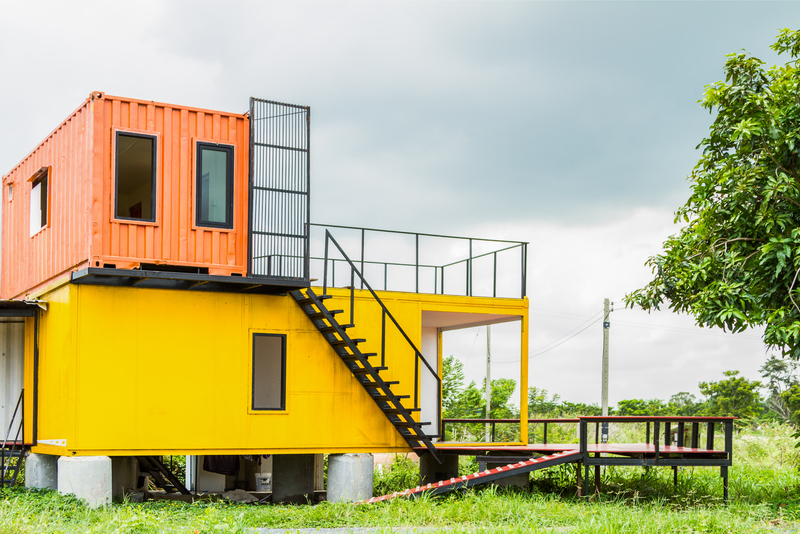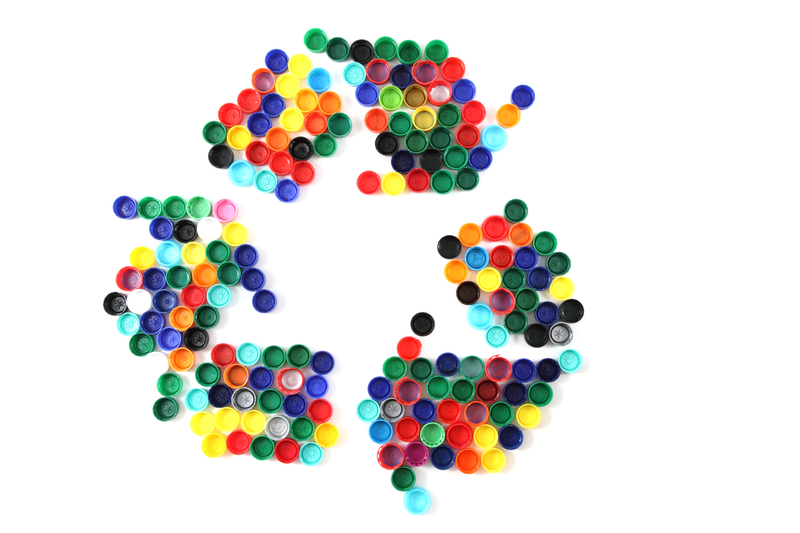Environmentally Friendly Ways to Deal With Outdated Cookware
Is your kitchen overflowing with pots and pans you no longer use? If you're wondering what to do with old cookware that has passed its prime, the good news is: you don't have to send it to the landfill. There are many environmentally friendly methods to manage outdated cookware, helping you reduce waste, support sustainability, and perhaps even inspire creativity at home.

Why Proper Disposal of Old Cookware Matters
Every year, millions of pieces of outdated cookware end up in garbage dumps, contributing to pollution and resource depletion. Many pots and pans are made from metals, plastics, ceramics, and coatings that can take centuries to break down. Environmentally friendly cookware disposal is crucial to promote a circular economy and minimize your carbon footprint.
- Landfill reduction: Pots and pans don't biodegrade and can take up precious landfill space.
- Resource preservation: Metal and other materials can be recycled and reused for other products.
- Reduced toxins: Many nonstick pans contain chemicals like PTFE or PFOA, which can leach into soil and water if disposed of improperly.
Assess the Condition of Your Old Cookware
Before deciding the fate of your outdated pots and pans, assess their condition:
- Is it still functional? A minor scratch or loose handle can often be repaired.
- Is it safe? Nonstick coatings that are severely worn or chipped may pose a health risk.
- Can it be restored? Some cookware, especially cast iron, can be restored with seasoning and care.
Sort Your Cookware by Material
- Aluminum & Stainless Steel: These metals are highly recyclable.
- Copper: Also widely accepted by scrap dealers.
- Nonstick pans (e.g., Teflon): More difficult to recycle due to chemical coatings.
- Ceramic, Enamel, and Glassware: Often cannot be recycled curbside, but may have special options.
Best Environmentally Friendly Methods to Deal With Outdated Cookware
1. Repurpose or Upcycle Old Cookware
One of the most eco-friendly ways to handle outdated cookware is to give it a new purpose. Get creative and upcycle old pots and pans into useful or decorative items for your home and garden.
- Planters: Drill a hole for drainage and use old saucepans or skillets as quirky flowerpots.
- Wall Art: Arrange pans artistically on your kitchen wall for a rustic look.
- Organizers: Use muffin tins or small pans to organize craft supplies or hardware.
- Bird feeders or baths: Hang old bowls or pans from trees to attract birds.
*Upcycling minimizes waste, reduces demand for new goods, and adds a personalized touch to your space.*
2. Donate Usable Cookware
If your kitchen items are still in decent condition, donate your old cookware to charities, thrift stores, shelters, or community kitchens. Many low-income communities and nonprofit organizations welcome donations of functional kitchenware.
- Check donation guidelines to ensure they accept used cookware. Some organizations require pots and pans to be in good condition and without nonstick damage.
- Freecycle networks and community online groups are also great places to connect with people who might need your cookware.
*Giving your items a second life significantly extends their usefulness and reduces environmental impact.*
3. Recycle Metal Cookware Responsibly
Many types of pans and pots can be recycled--especially those made from stainless steel, aluminum, or copper. These materials are valuable and widely accepted by metal scrap yards and specialized recycling centers.
- Remove non-metal components such as rubber handles or plastic knobs whenever possible.
- Contact your local recycling center to ask if they accept metal cookware.
- You might earn a small amount of money from scrap metal dealers--every bit helps!
Note: Nonstick cookware can be tricky, as Teflon-coated pans may not be accepted for standard metal recycling. Check with your waste management provider for options.
4. Participate in Cookware Take-Back Programs
Some cookware brands and retailers offer take-back and recycling programs for old products, promoting a closed-loop system where materials are reused to create new items. Here are some examples:
- Le Creuset and other major brands have been known to accept old cookware in exchange for store credit or recycling.
- TerraCycle occasionally partners with manufacturers for cookware recycling events.
- Local retailers may offer trade-in events--keep an eye out for community recycling drives.
Check the manufacturer's website or ask in-store to see if a take-back program is available to you.
5. Sell or Give Away Online
If your cookware still has some life left, consider selling it on online marketplaces or giving it away through local community groups.
- Platforms like Craigslist, Facebook Marketplace, Freecycle, or Nextdoor make it easy to pass on your old pots and pans.
- Selling or gifting directly can save shipping energy and packaging waste compared to buying new items.
6. Repair and Restore When Possible
Many people are surprised at how easily old cookware can be restored. Instead of tossing a rusty pan or a pot with a loose handle, try:
- Seasoning cast iron: Remove rust and reseason to restore the surface.
- Tightening handles or knobs: Simple screws can make old pots safe and easy to use.
- Fixing minor chips or scratches: Specialized repair kits are available for enamel or ceramic cookware.
*Restoring old cookware not only extends its life but also reduces the overall waste in your household.*
What To Avoid: Non-Environmentally Friendly Practices
While easy, simply throwing old cookware in your regular trash is the least environmentally friendly option. Here's what to avoid:
- Dumping nonstick pans: These landfill poorly and can leach chemicals.
- Burning cookware: This can release toxic fumes, particularly with nonstick or plastic-coated pans.
- Abandoning cookware outdoors: This creates litter and possible environmental hazards.
Special Considerations for Certain Types of Cookware
Dealing with Nonstick Cookware
Nonstick pans (like those with Teflon coatings) present a unique environmental challenge. Ideally, use these until they are no longer safe, then:
- Check for specialized collection events: Some municipalities have hazardous waste pickups that accept these items.
- Contact the manufacturer: See if a take-back program is available.
- Remove metal parts: If possible, separate the metal from the coating, as some scrap dealers may accept the metals separately.
Ceramic and Glass Cookware
Ceramic and glass aren't generally accepted with regular glass or curbside recycling because of their high melting points and different compositions.
- Search for art supply stores: Some artists use broken ceramics or glass for mosaics or sculpture projects.
- Reuse in the garden: Broken pieces can serve as drainage at the bottom of pots.
- Last resort: If no option exists, minimize impact by reusing creatively rather than sending to landfill.
Copper Cookware
Copper is one of the most valuable metals for recycling. Scrapyards pay well for copper items, but you'll need to remove any non-metal parts.
- Check with local scrap dealers: Make sure they accept cookware and follow their preparation guidelines.
- Restore old copper: Polished copper pots (even with dents!) can become beautiful kitchen decor.
Tips for Preventing Outdated Cookware in the Future
The most environmentally responsible way to manage cookware waste is to prevent it from happening. As you restock or upgrade your kitchen, consider these best practices:
- Buy durable cookware: Invest in high-quality pieces that will last for decades--cast iron, stainless steel, and enameled cookware is often a top choice.
- Avoid cheap, disposable kitchenware: Low-cost items tend to warp, break, or degrade faster, ultimately costing more in the long run.
- Maintain your cookware: Regular cleaning, seasoning, and proper storage prolong the life of your items.
- Choose eco-friendly brands: Look for companies with recycling programs or sustainable manufacturing practices.

The Benefits of Environmentally Friendly Cookware Disposal
When you choose environmentally friendly methods to handle outdated cookware, you:
- Reduce landfill waste and environmental toxins.
- Preserve valuable resources by recycling metals.
- Support your community with donations or upcycled art.
- Encourage broader participation in the circular economy.
Conclusion: Make Kitchen Sustainability a Priority
If your kitchen drawers are bursting with old, unwanted cookware, resist the urge to toss it in the trash. By repurposing, donating, recycling, or restoring these items, you make a tangible, positive impact on the environment. Start by assessing each piece, researching local recycling options, and embracing creative solutions--your earth-friendly efforts can inspire others in your community to do the same.
Embracing sustainable habits in the kitchen benefits your home, your neighborhood, and our planet. Next time you outgrow a pot or pan, remember that with a little effort, there are greener ways to say goodbye to outdated cookware!